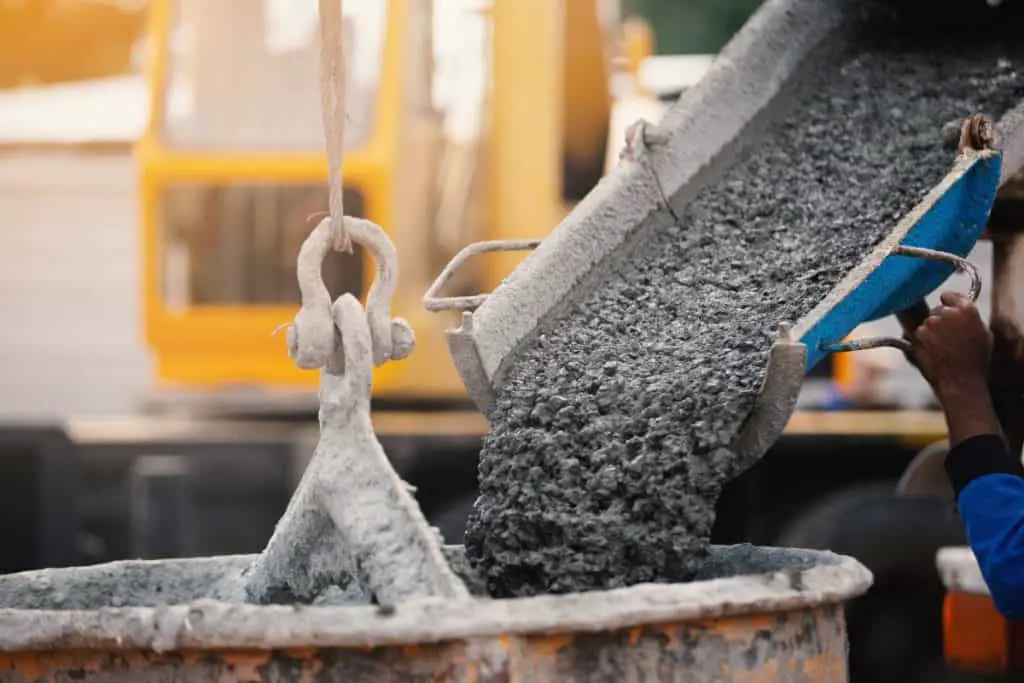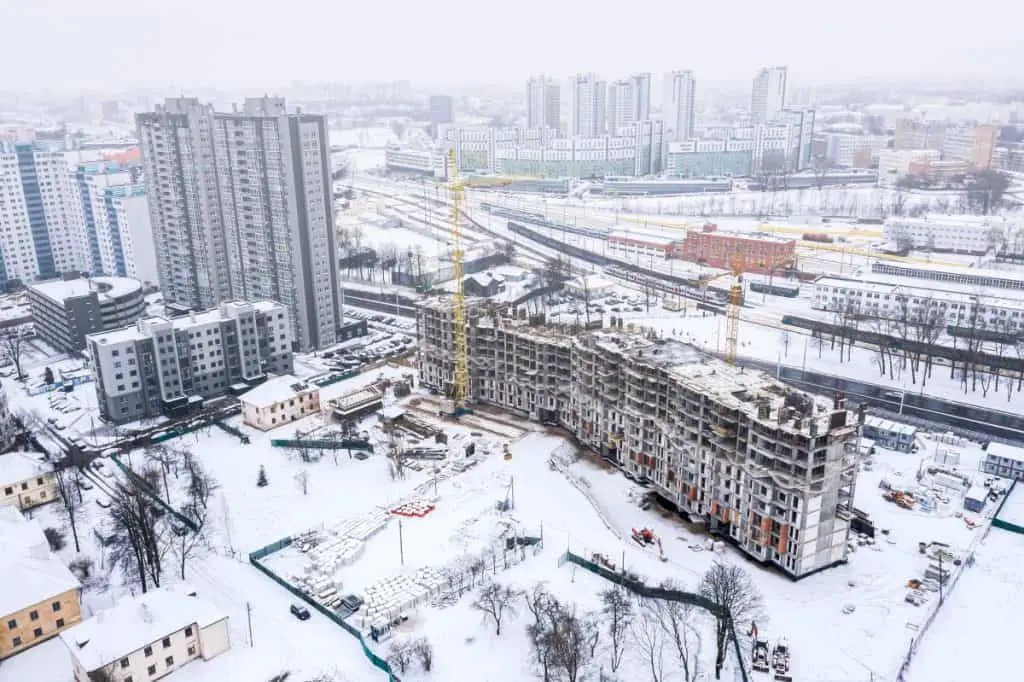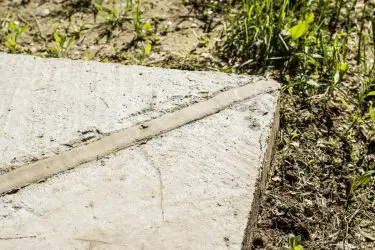The work of concrete doesn’t stop when the summer months fade. Sidewalks still need to be made, driveways installed, and other construction work must go on. Luckily for us, concrete workers have been able to poor concrete even in the worst of conditions, and coldest of places.
Avoiding cracks while pouring concrete in the cold weather is possible with precautions. Keep the temperature of the concrete, ground, and surrounding air above 40 degrees Fahrenheit for the duration of the curing process. Preventing the concrete from freezing will help deter it from cracking.
While moderate temperatures work best for pouring concrete, understanding the key definitions and processes that take place beforehand will aid in the success of your preparation in the cold. There are specific things that can be done to prepare, help pour, and aid in the success of the curing concrete.

To begin, let’s define what cold weather is in construction terms.
Cold weather is “three or more consecutive days of low temperatures, specifically outdoor temperatures below 40 degrees Fahrenheit and air temperatures below 50 degrees Fahrenheit for more than any 12-hour period.” Source.
Table of Contents
Factors to Consider
Believe it or not, the temperature of the air should not be your only concern when thinking about pouring concrete. It is important to also think about the following:
- the humidity levels
- the wind speed
- temperatures of the surface where you are placing the concrete
- the water temperature
- the dry concrete temperature
When getting ready to pour, the temperature of all the components matters and will influence the concrete.
“It is critical that the concrete sets before it is exposed to freezing temperatures. The problem is that when water freezes it takes up more space in the ice phase than it does in the liquid phase. When all of the water that you used for mixing freezes, it expands, causing your concrete to crack.” Source.
As a rule of thumb, each 20-degree drop in temperature will double the set time.
No one wants cracked concrete, or weak concrete just because they couldn’t control the wind and the weather, below is a process by which pouring concrete can be done in the cold.
The Process of Pouring Concrete in the Cold
You may be wondering what all the fuss is about pouring concrete in cold weather, but the reason that such great precautions take place when it is cold is to ensure the strength and durability of the concrete.
As a matter of fact, the concretes potential strength can be reduced by more than 50% and its durability will suffer accordingly, if left to freeze and improperly set up.
The process of preparing, pouring, and allowing the concrete to cure are critical to its success.
Prepare the Concrete and the Ground
Before you even begin pouring your concrete, there are a few things to consider that will help in keeping the mixture at the correct temperature throughout the pouring process.
Preheating one of the ingredients will allow the concrete to stay warm. This can be done by warming the aggregate (or gravel) or heating the water.
Concrete companies have the capacity to keep the mixture warm in transport, but on-site using heated water is the best option.
Another important temperature to consider while preparing is that of the ground on which you will lay the concrete.
Laying concrete on the frozen or cold ground will lead to uneven settling as the ground thaws from the warm concrete mixture being poured.
Warming the ground can be done by insulating it a couple of days in advance, spreading hot sand, or steaming.
Overall, the ground needs to be as close to the concrete mixture temperature as possible.
There are also different ratio mixtures possible depending upon the density of cold weather. This usually means increasing the amount of cement powder in the mixture.
Use Windbreaks and/or Heated Enclosures
The poured concrete, the air around the concrete, and the surface seem like a lot to look after, but create the perfect environment for the cement to set up in.
If it is really windy, and cold when you plan to pour your concrete, windbreaks could be helpful.
Generally, these are about 6 feet tall and protect the concrete from uneven and sudden drops in temperature. They also protect against sudden evaporation of the water component of the mixture.
Heated enclosures can also be incredibly helpful in the process. There are a variety of options that can work in creating a warm environment, including a hydroponic system, an electric heater, or a fuel-burning heater with air circulation.
Use Heaters or an Insulated Blanket During Curing
Curing is the longest part of the process, but what leads to the success or failure of the process. The curing process is when the chemicals in the concrete react with water to bind the mixture together.
If the temperature during this time is inconsistent, it will lead to the concrete taking too long to set correctly, or not setting quickly enough.
For anywhere from 12 to 48 hours, the freshly poured concrete needs to stay at an even temperature of 40 degrees or greater to set correctly.
Therefore, throughout this curing process, you must maintain the temperature.
You can do this by keeping the electric heaters going, or placing an insulated blanket over the top of the concrete and slowly lowering the temperature of the heaters.
As concrete cures it emits heat. This is why covering concrete with a curing blanket during the curing period is one of the easiest ways to hold in heat and thus cure the concrete faster in colder temperatures.
The concrete will continue to cure for anywhere from 3 to 14 days depending upon the mixture. The first 24 hours are the most important.
For the ultimate success of your concrete, try and maintain a temperature above 40 degrees until you are ready to use the concrete.
The Cold Could Cause More Bleeding
Bleeding in concrete “refers to the process where free water in the mix is pushed upward to the surface due to the settlement of heavier solid particles such as cement and water.” Source.
When pouring concrete in cold weather, more bleeding may be expected.
Often, the bleeding in cold weather doesn’t occur at the same rate as concrete laid in warmer times. Watch for it, and be sure not to apply finish until the bleeding has taken place.
It will evaporate over time, and then the finishing process can begin.
Tips for Pouring Concrete in Cold Weather
Concrete pouring during cold weather can actually be stronger and more durable than concrete poured in hot weather because it slows down the process of curing.
Here is a list of tips that may be helpful as you try to pour concrete in the cold:
- Before you begin, have a plan that will include all the necessary warming techniques and supplies.
- Determine the mix ratio you will need depending on the weather and type of cement.
- Make sure that the heated enclosure is wind and weatherproof.
- “Concrete in cold weather is recommended to have a low slump, and minimal water to cement ratio, to reduce… setting time.” Source.
- Consider buying concrete that is designed to set up more quickly than normal. While the cold air will slow it down, it will still act faster than regular concrete.
- Protect the concrete from freezing until it has reached the ability to withhold a compressive strength of 500 PSI.
- For concrete that will be expected to hold a large amount of weight, adjust the temperature to closer to 50 degrees Fahrenheit.
- Make sure all ingredients, like the aggregate or reinforcements, are free of ice or excess water.
- Infrared Thermometers can be used to check the temperature and ensure it is staying above 40 degrees.
- When the curing is finished, a slow 24-hour temperature drop is recommended.

Cautions When Pouring Concrete in the Cold
There are quite a few tips that can be incredibly helpful, but there are also a handful of things that should be avoided as you work to create a new structure in the winter.
Precautions will definitely help iron out the fine details of pouring concrete in the cold.
- Avoid using cold tools, as this will bring down the temperature of the mixtures.
- Do not allow your concrete to freeze.
- Make sure the ground you lay the concrete on is also 40 degrees or above.
- Do not overheat one area, while under heating another, or inconsistencies in the setting will occur.
- Sealing concrete after it has set up, should also take place in an atmosphere above 50 degrees Fahrenheit.
- Cold air leads to less humidity, and the concrete drys too quickly on the edges. To avoid this, leave the forms in place as long as possible.
- Avoid de-icing salts for up to a year to help the concrete maintain its strength.
Now, we know in which way concrete can be laid even in the cold weather. Always be sure to never let your concrete freeze.
Preparing, pouring, and curing tips along the way will ensure every step of the process is done in a warm environment. Done correctly and effectively and this could be the strongest concrete you have ever poured, with no cracks!



